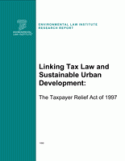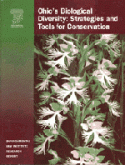
Research Reports
ELI publishes Research Reports available for free download that present the analysis and conclusions of the policy studies ELI undertakes to improve environmental law and policy. These reports contribute to education of the profession and disseminate diverse points of view and opinions to stimulate a robust and creative exchange of ideas. Those publications, which express opinions of the authors and not necessarily those of the Institute, its Board of Directors, or funding organizations, exemplify ELI’s commitment to dialogue with all sectors.
This report provides a state-by-state summary, including Puerto Rico and the District of Columbia, of enforcement-based laws that are potentially applicable to nonpoint source water pollution. This study discusses the diversity and ubiquity of state legal mechanisms as well as the inconsistent treatment of similar problems from one state to the next.
Read More >
This report examines the Superfund cleanup programs of all 50 states, Puerto Rico and the District of Columbia. The Study provides a snapshot of state statutes, program organizations, staffing, funding, expenditures, cleanup standards and cleanup activities.
Read More >This report analyzes the cleanup process and reuse of Mound Plant in Miamisburg, Ohio, which was formerly used by the Department of Energy (DOE) as an integral part of the nuclear weapons production complex. The study focuses on institutional controls, specifically
Read More >
This report discusses the Taxpayer Relief Act of 1997 which changed the treatment of capital gains on home sales in an attempt to discourage exurban sprawl. This study examines the effects of former Internal Revenue Code
Read More >
Public and private development and management decisions can result in degradation and losses of Ohio`s biological diversity. Sometimes these losses occur because of a lack of knowledge about the many opportunities that exist to promote conservation and restoration activities. Many individuals, companies, institutions, and government agencies could contribute substantially to protecting biological diversity if they recognized its economic value and social benefits.
Read More >